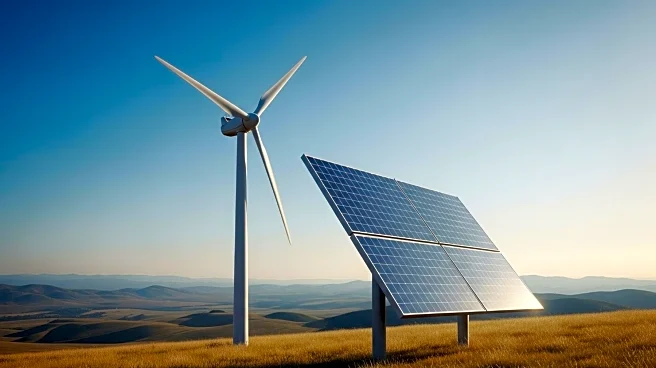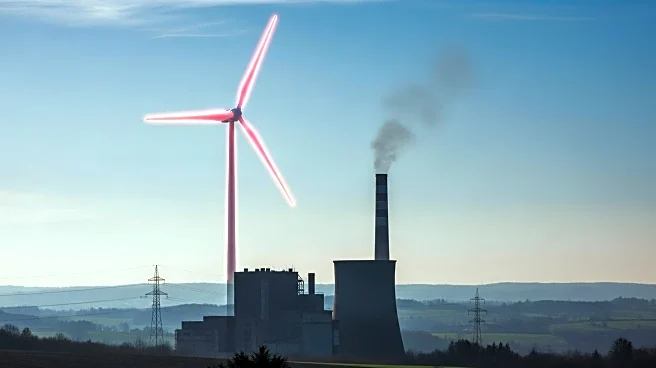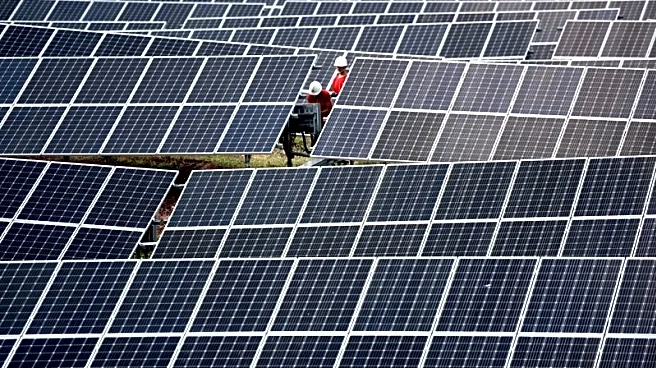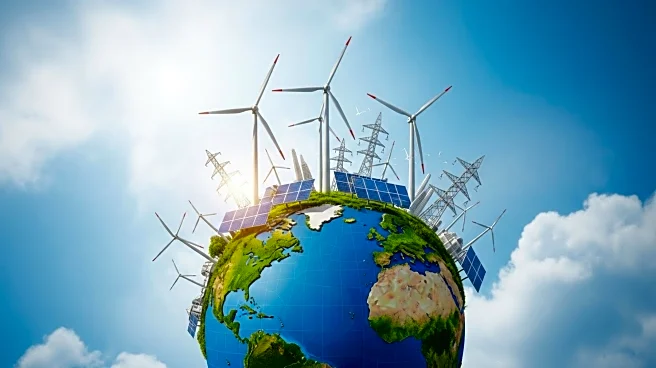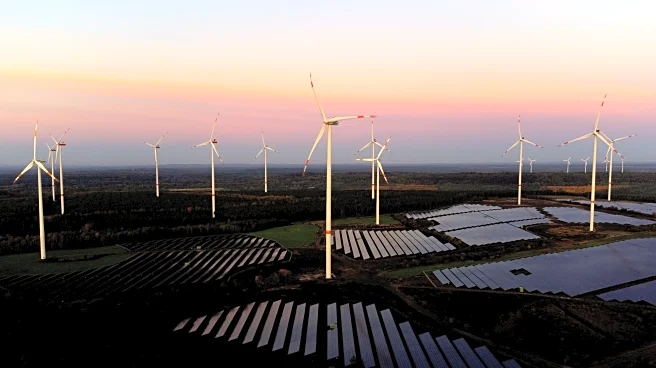What's Happening?
The International Energy Agency (IEA) has revised its forecast for global renewable power growth, projecting a total capacity of 4,600 gigawatts by 2030, down from a previous estimate of 5,500 gigawatts. This adjustment is attributed to weaker outlooks in the United States and China. In the U.S., the early phase-out of federal tax incentives for renewable energy, as part of President Donald Trump's 'One Big Beautiful Bill,' has contributed to the lowered forecast. In China, the shift from guaranteed electricity prices for renewable projects to competitive auctions is constraining profits, further impacting growth. Despite these challenges, the IEA notes positive developments in other regions, such as India, which is on track to meet its 2030 renewable energy targets.
Why It's Important?
The revised forecast by the IEA highlights significant challenges in achieving global renewable energy targets, particularly in the context of climate change mitigation. The U.S. and China, being major players in the global energy market, have a substantial influence on the overall growth of renewable energy. The reduction in support and incentives in these countries could slow down the transition to cleaner energy sources, potentially affecting global efforts to combat climate change. However, the positive outlook in regions like India and the Middle East suggests that other countries may fill the gap, potentially leading to shifts in global energy dynamics and investment patterns.
What's Next?
The IEA's report suggests that while the U.S. and China face challenges, other regions are poised for growth in renewable energy. Countries like India are expected to become significant players in the renewable sector, potentially altering global energy markets. Policymakers and industry leaders in the U.S. and China may need to reassess their strategies to support renewable energy development. Additionally, the geopolitical climate and energy security concerns may drive further investment in renewables, as countries seek to reduce dependency on fossil fuels and enhance energy diversification.
Beyond the Headlines
The shift in renewable energy policies in the U.S. and China could have broader implications for international climate agreements and collaborations. As these countries adjust their domestic policies, there may be increased pressure on other nations to step up their commitments to renewable energy. This could lead to new alliances and partnerships in the energy sector, as well as innovations in technology and financing models to support renewable projects. The evolving landscape may also influence public perception and consumer behavior towards sustainable energy solutions.

